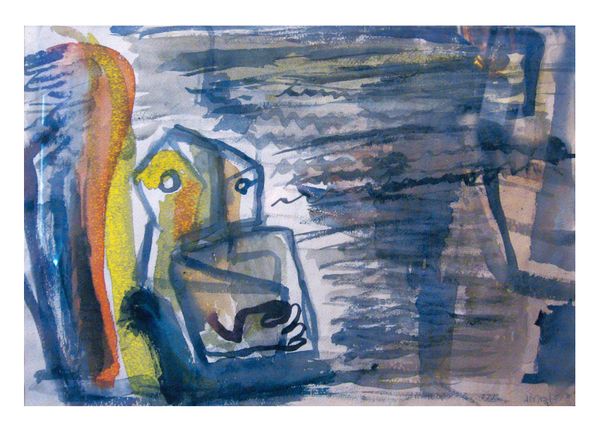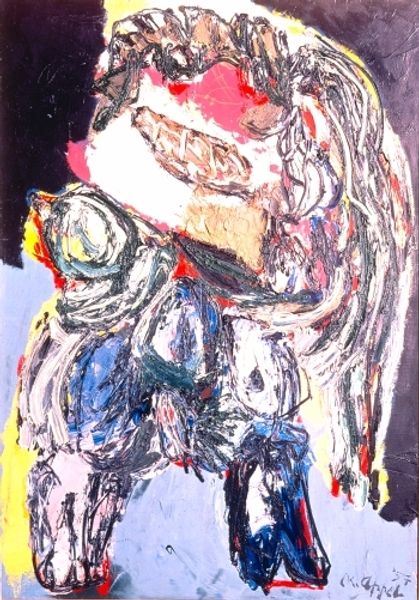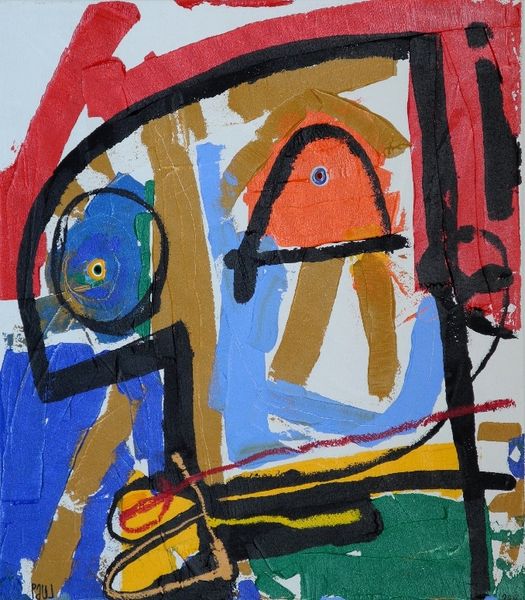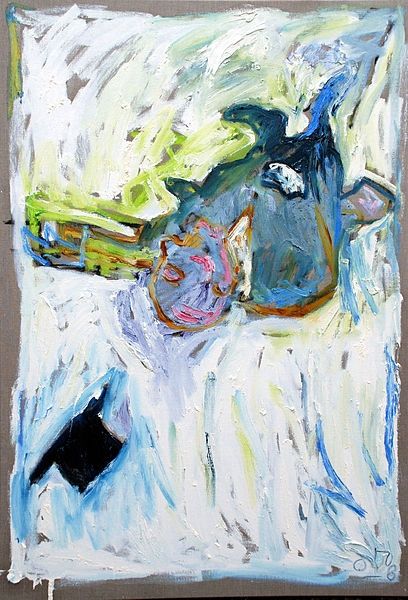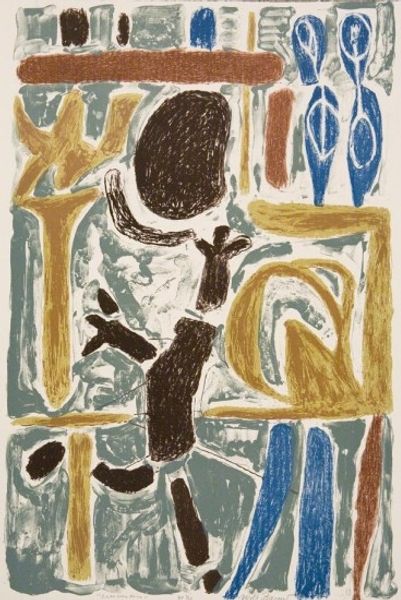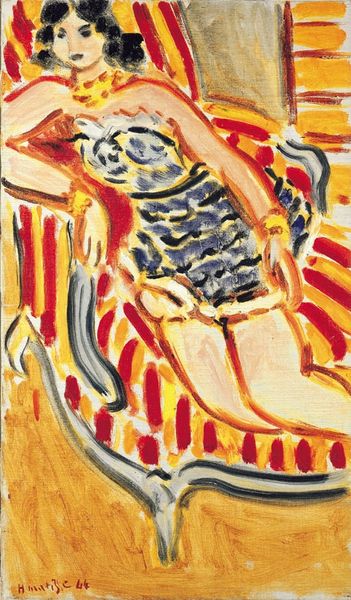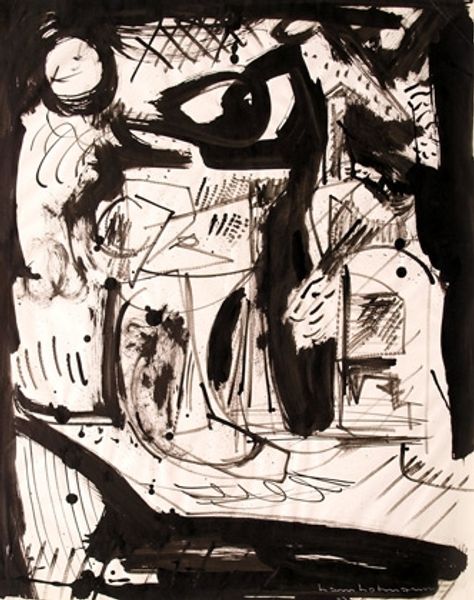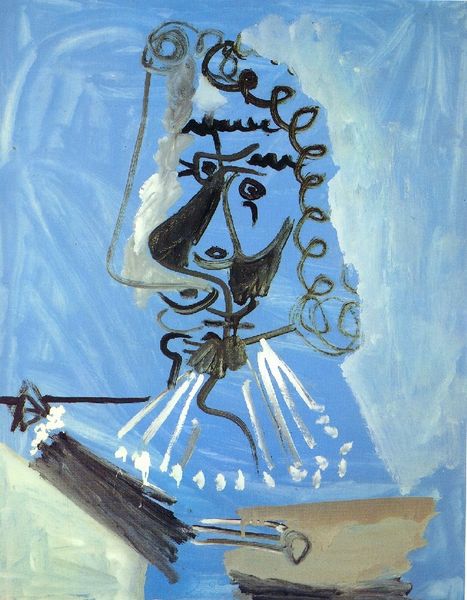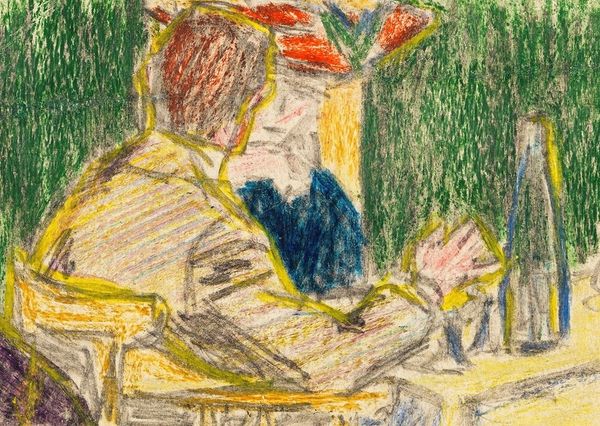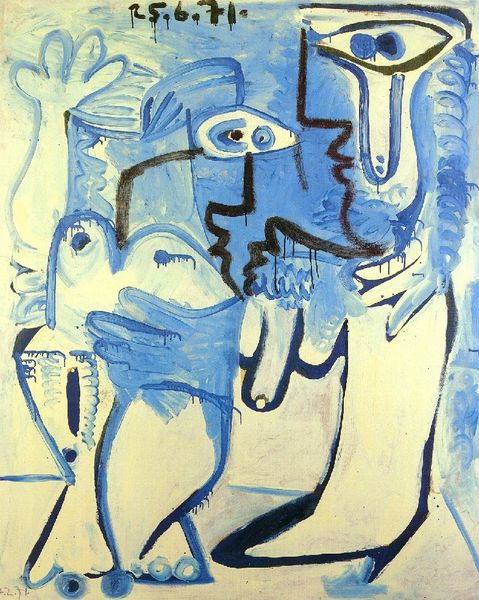
Copyright: Pablo Picasso,Fair Use
Editor: This is Pablo Picasso's 1957 version of *Las Meninas*, an oil painting that reimagines Velázquez's famous work. It's a pretty abstract interpretation, and at first glance, it's hard to decipher any distinct forms! What can you tell me about it? Curator: Well, this is more than just a reinterpretation; it’s a critical engagement. Picasso isn't simply copying Velázquez. He's dissecting power structures, class dynamics, and the gaze itself. What do you notice about the figures, the colours? How does it feel different from the original? Editor: It’s definitely less polished, rougher somehow. The shapes are simplified and kind of geometric. Does that have anything to do with... class? Curator: Exactly. The cubist style disrupts the established order of representation. Consider: Velázquez's *Las Meninas* solidified the Spanish monarchy’s image. Picasso, painting after the horrors of WWII, uses abstraction as a visual language of upheaval, challenging traditional notions of power and representation. Where does the eye go first, and why? Editor: I keep looking at the center, that black… form? It’s hard to make out any specific figure. Curator: Perhaps that is because our traditional interpretation of the piece may not matter to Picasso. It challenges how we’re trained to see art and its role in reinforcing dominant ideologies. What assumptions did *you* make looking at it the first time? Editor: I assumed that it was *supposed* to look like *Las Meninas* at first, that it failed to. I see that wasn't quite the point at all! It makes you wonder why certain art is revered, and who decides what is deemed good. Curator: Precisely. By deconstructing Velázquez's masterpiece, Picasso invites us to question the very foundations of art history and the power structures it upholds. Editor: That really reframes my whole view on this painting. It's less about mimicry, more about a… visual critique! Thank you.
Comments
No comments
Be the first to comment and join the conversation on the ultimate creative platform.
